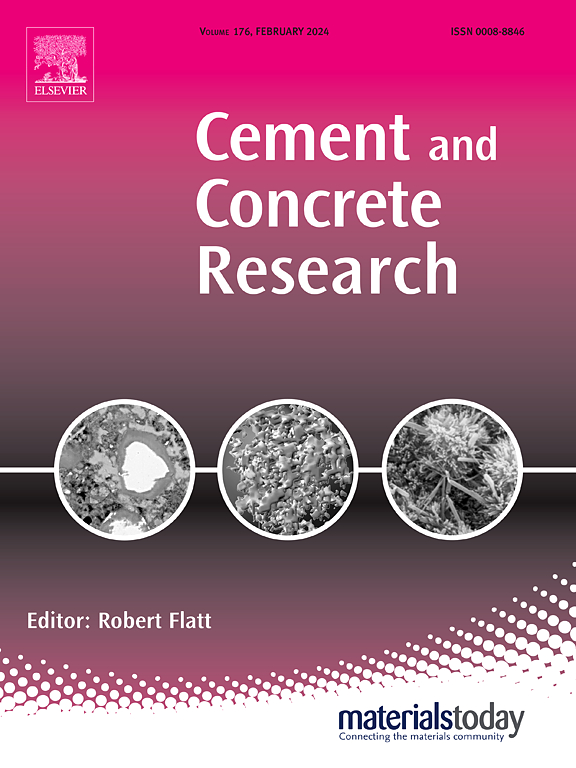碱活化渣体加速碳化过程中C-(A)- s - h和Mg-Al LDH相变及显微组织演变的4D定量研究
IF 13.1
1区 工程技术
Q1 CONSTRUCTION & BUILDING TECHNOLOGY
引用次数: 0
摘要
采用原位同步加速器x射线衍射计算机断层扫描(XRD-CT)和微断层扫描(μCT)研究了加速碳化对水玻璃和碳酸盐活化矿渣水泥浆体的影响,重点研究了矿渣水泥浆体的晶相、半晶相和孔隙结构的变化。碳化加速导致铝取代水合硅酸钙(C-(A)- s - h)夹层脱钙,导致层间距离减小,体积收缩,孔隙率增大,孔隙体积增大。类水滑石Mg-Al LDH相作为CO2汇,通过层间OH -阴离子交换CO32 -,减缓孔溶液中CO32 -浓度的增加,在水玻璃渣水泥浆中发挥更大的作用。与碳酸钠活化矿渣水泥相比,硅酸钠活化矿渣水泥具有更细、更弯曲的孔隙分布和更高的抗碳化能力,表现为碳化引起的C-(a)- s - h收缩程度更小,碳化过程中孔隙体积的增加也更小。本文章由计算机程序翻译,如有差异,请以英文原文为准。
4D quantification of C-(A)-S-H and Mg-Al LDH phase alterations and microstructural evolution during accelerated carbonation of alkali-activated slag pastes
In situ synchrotron X-ray diffraction computed tomography (XRD-CT) and micro-tomography (μCT) are used to determine the effects of accelerated carbonation on sodium silicate- and carbonate-activated slag cement pastes, focusing on changes in crystalline and semi-crystalline phases, and pore structures. Accelerated carbonation leads to decalcification of the interlayer of aluminium-substituted calcium silicate hydrate (C-(A)-S-H), resulting in reduced interlayer distance, volume shrinkage, and increased porosity with larger pore volumes. The hydrotalcite-like Mg-Al LDH phase acts as a CO2 sink, mitigating the increased concentration of CO32− in pore solution via interlayer anion exchange of OH− for CO32−, playing a more significant role in sodium silicate slag cement paste. Additionally, sodium silicate-activated slag cement is found to have a finer, more tortuous pore distribution and higher carbonation resistance than sodium carbonate-activated slag cement, as evidenced by a smaller degree of carbonation-induced C-(A)-S-H shrinkage, and a smaller increase in porosity volume during carbonation.
求助全文
通过发布文献求助,成功后即可免费获取论文全文。
去求助
来源期刊

Cement and Concrete Research
工程技术-材料科学:综合
CiteScore
20.90
自引率
12.30%
发文量
318
审稿时长
53 days
期刊介绍:
Cement and Concrete Research is dedicated to publishing top-notch research on the materials science and engineering of cement, cement composites, mortars, concrete, and related materials incorporating cement or other mineral binders. The journal prioritizes reporting significant findings in research on the properties and performance of cementitious materials. It also covers novel experimental techniques, the latest analytical and modeling methods, examination and diagnosis of actual cement and concrete structures, and the exploration of potential improvements in materials.
 求助内容:
求助内容: 应助结果提醒方式:
应助结果提醒方式:


